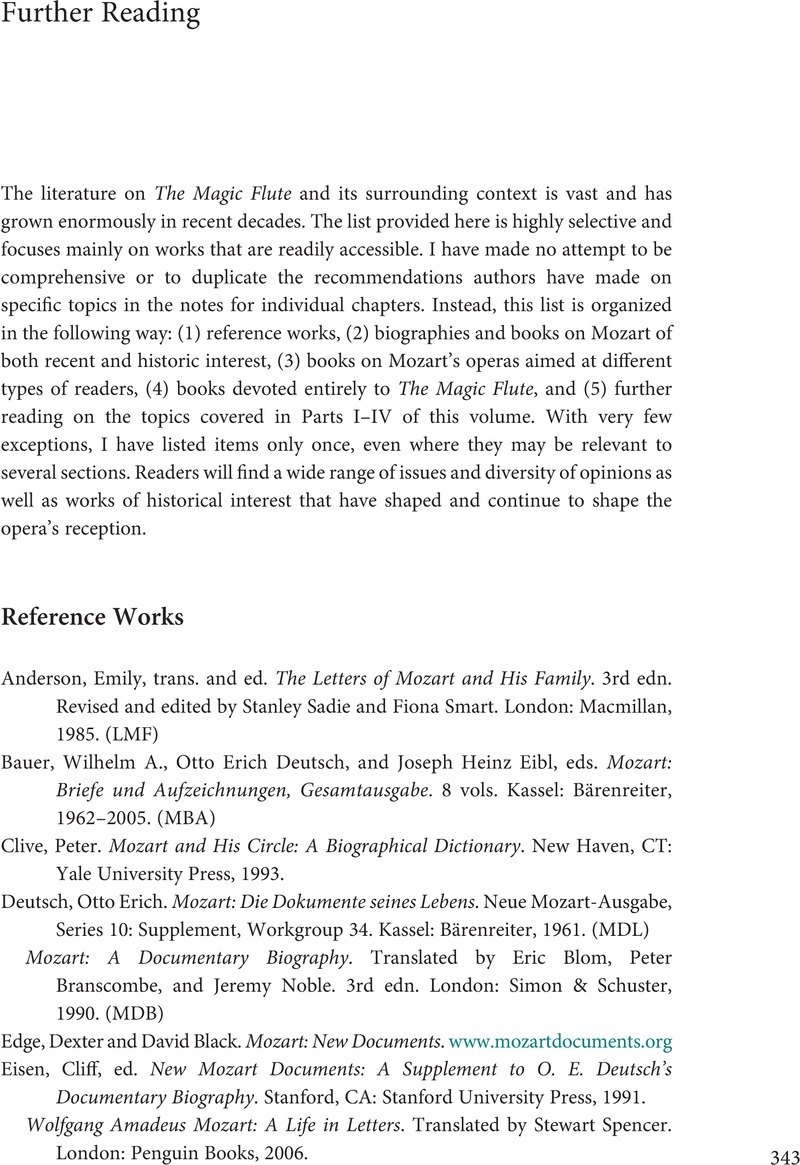Book contents
- The Cambridge Companion to The Magic Flute
- Cambridge Companions to Music
- The Cambridge Companion to The Magic Flute
- Copyright page
- Dedication
- Contents
- Figures
- Tables
- Musical Examples
- Contributors
- Acknowledgments
- Abbreviations
- Introduction
- Part I Conception and Context
- Part II Music, Text, and Action
- Part III Approaches and Perspectives
- Part IV Reception, Interpretation, and Influence
- Further Reading
- Index
- References
Further Reading
Published online by Cambridge University Press: 24 November 2023
- The Cambridge Companion to The Magic Flute
- Cambridge Companions to Music
- The Cambridge Companion to The Magic Flute
- Copyright page
- Dedication
- Contents
- Figures
- Tables
- Musical Examples
- Contributors
- Acknowledgments
- Abbreviations
- Introduction
- Part I Conception and Context
- Part II Music, Text, and Action
- Part III Approaches and Perspectives
- Part IV Reception, Interpretation, and Influence
- Further Reading
- Index
- References
Summary

- Type
- Chapter
- Information
- The Cambridge Companion to The Magic Flute , pp. 343 - 353Publisher: Cambridge University PressPrint publication year: 2023



